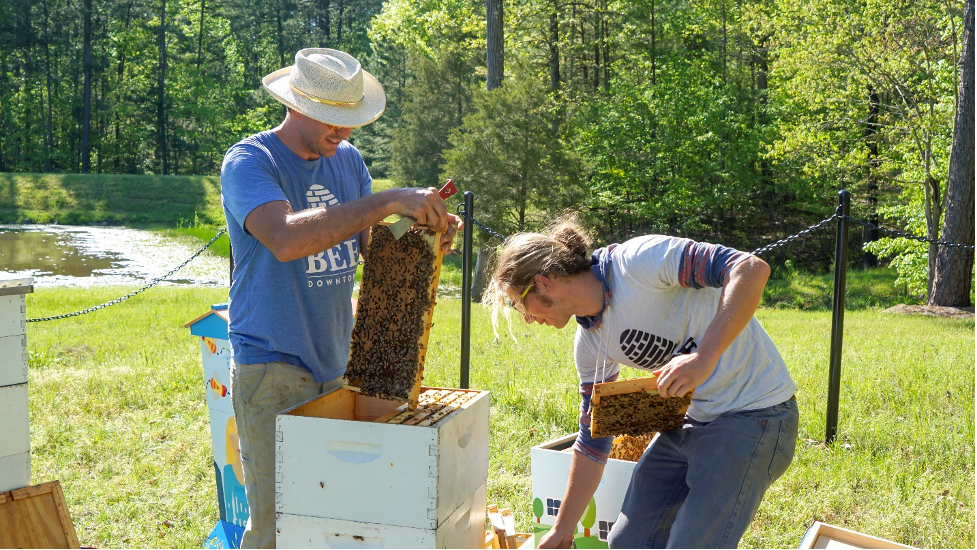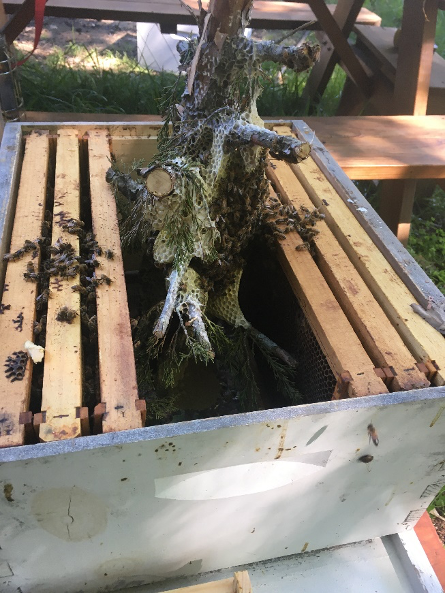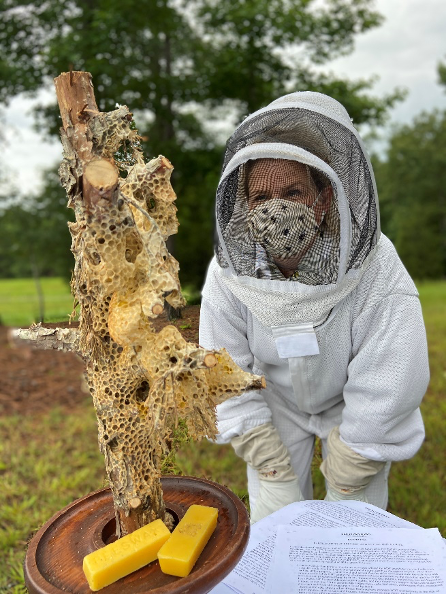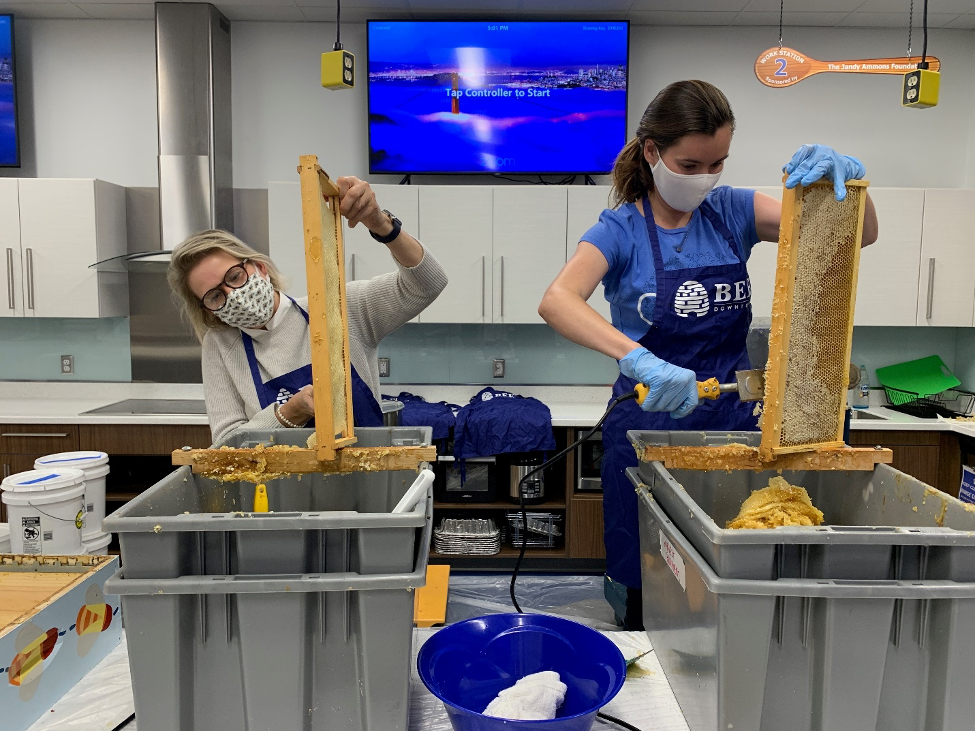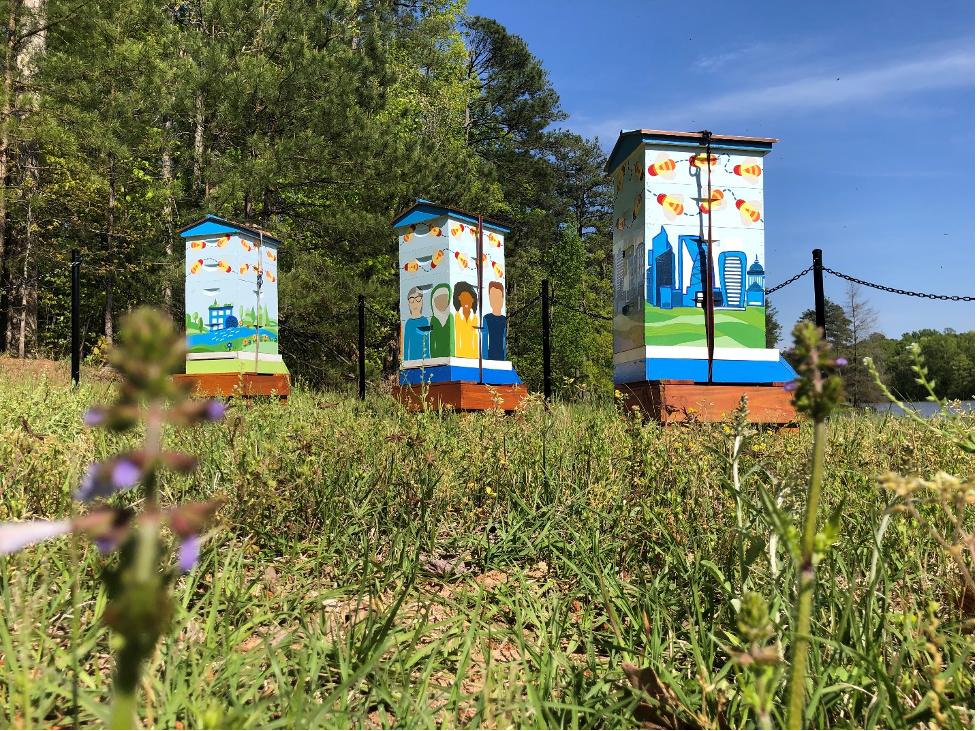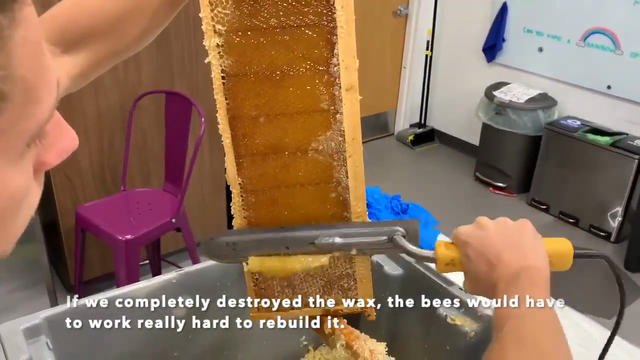A Sweet Year: The BUZZ Around the Cisco Beehives in RTP
Time has buzzed by – especially if you are a Cisco honeybee. Last year, we installed beehives near our Research Triangle Park campus, in partnership with Bee Downtown and the RTP Foundation, to support the growing pollinator population in North Carolina, advance honeybee education across the region, and contribute toward the largest pollinator corridor in the country. Along with 100,000+ honeybees, our install was complete with signage, fencing, and three hand-painted hive boxes. Since then, our bees have been busy settling into their new home, pollinating local flowers, and producing our first-ever crop of Cisco honey.
Why honeybees, and why now?
Honeybees provide pollinator services to North Carolina’s $78 billion agricultural economy. It is not just in North Carolina that honeybees are important – according to Greenpeace, up to one-third of all food produced globally is pollinator-dependent. Despite the important role that honeybees play in our lives and food systems, bee populations are increasingly at risk. Wild honeybee populations are threatened by insecticide use, parasites, and monoculture farming. Also, according to Greenpeace, the number of bee colonies per hectare in the U.S. has declined by 90 percent since 1962.
Here’s an update on what the bees have been up to over the last year:
Winter 2019-20: The Cisco bee colonies move into their new homes, mainly staying inside the hives during the cold period. They form a cluster, almost like a football huddle, to keep their queen bee warm in the middle. She must stay at a constant 96 degrees Fahrenheit to survive. Even if it is 30 degrees outside, the Cisco beehives produce enough heat to keep their queens warm! In late December and early January, the queens begin to lay eggs that will hatch in the spring.
Spring 2020: The eggs hatch and bees leave the hive in search of pollen sources, such as clover, redbud trees, and other early emerging plants. Spring also marks swarm season: a time when a colony may split in half and leave the original hive in search of a new one. The bees ball up on trees or branches to find a new forever home. This happened at our site in the spring! Bee Downtown beekeepers cut the branch the rogue honeybees collected on and placed them in a protected box to be safely relocated to a new hive. Check out all the wax they built up!
Summer 2020: The honey-making season is in full swing. The bees spend up to twelve hours a day flying, on average, two miles to collect nectar and pollen to turn into honey for the winter ahead. The hives fill with honey, and the queen lays eggs for the next generation of bees.
Fall 2020: The bees completed their foraging and honey making for the year, as flowers and trees stop blooming across the southeast. We harvested over 140 pounds of honey from our hives (leaving plenty for the bees to feast on over the winter). In preparation for the upcoming winter, the female bees kick the male bees (drones) out of the hive to reduce demand on their honey stores.
Winter 2020-21: The bees huddle back into formation for the cooler season in North Carolina. The honey collected during the fall was decanted into over 400 bottles to share with Cisco bee enthusiasts. Above, watch a video of Cisco’s honey harvest.
Spring 2021: The bees reemerge from the hive and the cycle begins again. During our annual Earth Aware celebration, Cisco will host three educational webinars for our staff to learn about bee biology, how bees support agriculture, and steps we can take to protect bees. Celebrate World Bee Day with us on May 20th by planting a native pollinator plant, buying locally-produced honey, or sharing information on the importance of bees and other pollinators in our ecosystems.
To learn more about environmental sustainability at Cisco, please visit our Environmental Sustainability website.


